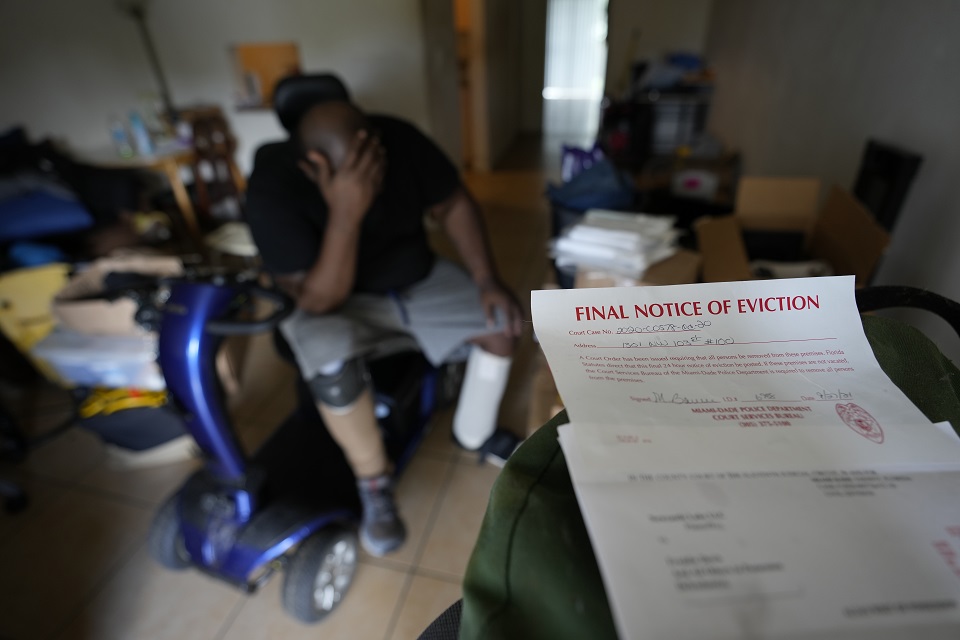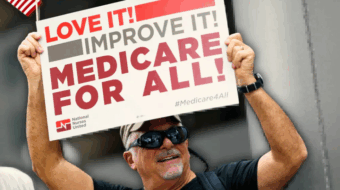
After hitting a record low of 7.8% in 2021, new data shows the government’s Supplemental Poverty Measure jumped to 12.4% last year. That’s a nearly 60% increase. And it’s all because politicians allowed proven income support programs to expire.
I’m an expert on poverty. I’ve lived it most of my life in Iowa. I studied it as a Bill Emerson National Hunger Fellow in rural West Virginia and in Washington, D.C. And now I help people experiencing poverty across the country tell their own stories to change policy.
People can pull themselves up by their bootstraps, get an education, and work multiple jobs. But in the face of rising prices, low wages, high rents, and a broken healthcare system, it’s often not enough. Without a safety net and a level playing field for families, financial security is often out of reach.
When I was growing up in Des Moines, my mom had a stable job with the state, but her pay wasn’t enough for a real home for my two siblings and me. Iowa, like every state, has a low-income housing crisis. And families of color like mine experience greater challenges obtaining affordable housing. We bounced around shelters, churches, and motel rooms.
Despite a stigma about accepting public assistance, we benefited from SNAP (aka “food stamps”) and the Women, Infants, and Children (WIC) program. But like other low-income families, we had to navigate the “benefits cliff.” When my mother made just $10 more, we’d lose the benefits we needed for sufficient, regular meals.
My father suffered from opioid addiction. When he was eventually able to get stable employment and rejoin our family, we finally got an apartment where the schools were decent. But a brain aneurysm suddenly took his life, and we ended up back on the opposite side of the city where the underfunded schools offered less opportunity.
I wanted to stay in my school, so I spent four hours a day commuting on public buses and on foot. I knew I needed to get into college to be able to help my family financially. Now I have a steady job, and so does my husband.
But everyday struggles don’t end. The brokenness of our healthcare system burst into my life again when our baby was born with a fatal condition. The medical costs ran nearly $1 million in just the first few months of his tragically short life.
What could prepare someone for that?
Thankfully, my employer pays 100% of my health insurance. That’s a rarity. If I’d been out of work or worked elsewhere, we would’ve gone bankrupt as we suffered the most tragic thing that could ever happen to us as parents.
These are just a few of the structural obstacles low-income people face every day. But there are solutions. The advocates I work with reported enormous relief after politicians finally agreed to invest in helping children and families during the COVID-19 crisis.
The expanded Child Tax Credit cut child poverty nearly in half. Expanded food programs through SNAP lifted more than 3 million people out of poverty and staved off an expected spike in hunger. Housing subsidies kept nearly 2.5 million people out of poverty and in their homes. And Medicaid enrollment protections reduced the number of uninsured people by 1.5 million.
The year those programs were implemented, the Supplemental Poverty Measure fell to 7.8%— its lowest ever level. But when politicians rejected continuing this vital help for families, it increased by a record amount.
This is a failure for families across the country. We need to renew and expand those programs as soon as possible.
Poverty is solvable. We know what works. Why don’t we do it?
Institute for Policy Studies / OtherWords
We hope you appreciated this article. At People’s World, we believe news and information should be free and accessible to all, but we need your help. Our journalism is free of corporate influence and paywalls because we are totally reader-supported. Only you, our readers and supporters, make this possible. If you enjoy reading People’s World and the stories we bring you, please support our work by donating or becoming a monthly sustainer today. Thank you!










